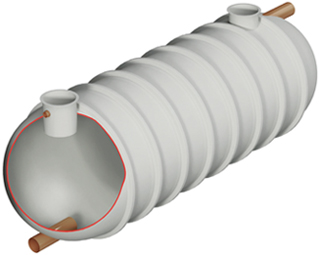Septic tanks are available in a number of varieties, with the most common types being the traditional chamber septic tanks and the modern fibreglass tanks. With any tank, there is a process through which the septic waste is allowed to build up before being removed.
Here, we explain this process, going through each of the stages involved in this tank’s functioning:
Breaking down solids
Firstly, any liquid waste from your house will drain into the tank, with the bacteria in the tank breaking down the solids. Any solids that cannot be broken down are removed regularly to maintain the tank’s efficiency. The remaining liquid from this process will flow out in a soak-away before it is left to lead to a sewage backup. This process occurs in the primary chamber of the tank, where any non-dissolvable substances are left at the bottom of the tank as a sludge; something which, if the tank is not emptied regularly, can lead to contamination of the soak-away.
Second chamber
This chamber is known as the ‘liquids chamber’ and within it, the finer solids within the liquid are removed. It is important, during this stage, to ensure that all outlet and inlet T-pieces are in the correct place to avoid raw sewage entering either this chamber or, even, the soak-away. To avoid this, some systems are fitted with an inspection chamber prior to or following the septic tank, ensuring that the flow to or from the tank is as it should be.
Bacterial crust
The formation of a bacterial crust atop the liquid waste in the primary chamber is a normal occurrence. Rather than being a problem, it is in fact a beneficial aspect of the process, often being left behind once the tank’s emptying process is complete.
Timescale
As a whole, the entire emptying process takes under an hour, leaving the liquid level at a low point. This soon changes, however, with new waste entering the tank leading back up to the normal level in around 5 to 10 days. It is recommended that tanks are fully emptied annually to ensure their efficient running at all times.
Where does the waste go?
The waste is taken to be disposed of legally at a licensed sewage treatment facility, where they deal with it appropriately.
Here at Wildon UK, we are proud to provide expert advice and help with our customers’ wastewater systems. Where yours is an industrial, commercial or domestic premises, simply get in touch with us today and we’ll be happy to help. We offer a 24 hour emergency service, so give us a call whenever you need us.
Go back to








